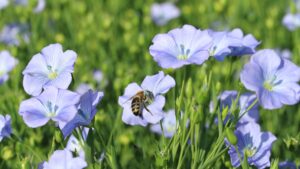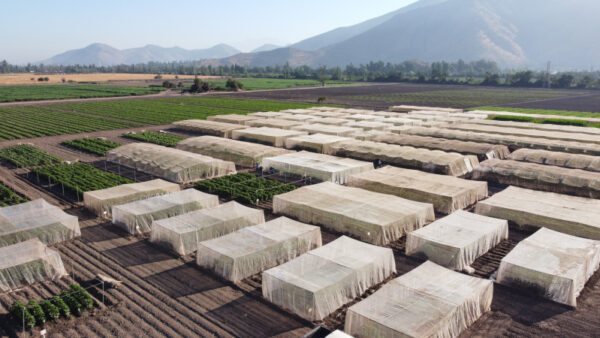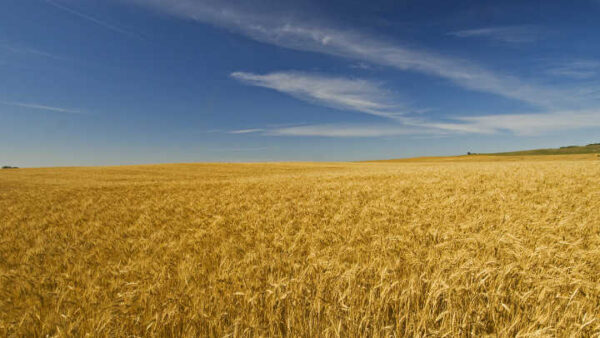The Prairie Grain Development Committee supports 52 lines for registration, ensuring the marketplace has access to the newest and most promising cultivars.
_x000D_
New varieties are the fuel that keeps the seed and agriculture industries going, and the Prairie Grain Development Committee (PGDC) helped provide that fuel at its annual meeting Feb. 22-25 in Saskatoon, Sask. More than 50 new cultivars in four different crop categories were recommended for registration, delivering even more options for stakeholders throughout the agriculture sector and beyond._x000D_
_x000D_
_x000D_
Twenty-seven cultivars were considered for recommendation by the Prairie Recommending Committee for Wheat, Rye and Triticale (PRCWRT), with 25 of them being recommended for registration, according to committee chair Curtis Pozniak. This is the third year the PRCWRT has instituted a new voting procedure — candidate cultivars that are endorsed by three expert evaluation teams (agronomy, disease and quality) automatically receive support for cultivar registration._x000D_
_x000D_
Twenty-two of the candidate cultivars considered were automatically endorsed, with the remaining being considered by the cultivar voting panel (CVP). This panel consists of 22 members representing the wheat value chain, and it is their responsibility to weigh the positive attributes of a cultivar against potential deficiencies that have been flagged by one or more of the three evaluation teams, Pozniak says._x000D_
_x000D_
Of the five that were referred to the CVP, two were tabled until next year, and two were supported for interim registration for a three-year period._x000D_
_x000D_
Two candidate cultivars approved by PRCWRT were in response to the modernization of the Canadian wheat class system. Under the modernization plan, two new wheat classes will come into effect Aug. 1: Canada Northern Hard Red (CNHR) and Canada Western Special Purpose (CWSP). Three wheat classes will be eliminated: Canada Western Interim Wheat (CWIW), Canada Western General Purpose (CWGP) and Canada Western Feed (CWF)._x000D_
_x000D_
“This year, the PRCWRT evaluated two cultivars for the CWRS class, but their end-use functionality was better-suited to other wheat classes,” he says. “Our committee is committed to flexibility, so we decided to set aside our normal voting procedures to consider these lines for either the CNHR or CPS classes._x000D_
_x000D_
“If we had not set aside our rules, these two cultivars would likely have not been considered, and an opportunity for producers may have been lost. This confirms our commitment to transparency and flexibility in our current operating procedures, and supports our efforts to ensure opportunities for western Canadian wheat producers.”_x000D_
_x000D_
_x000D_
One such cultivar was BW968, which failed to receive a positive recommendation in 2015 for CWRS. This year BW968 — a spring wheat bred by Agriculture and Agri-Food Canada’s Richard Cuthbert — was supported as a CPS cultivar._x000D_
_x000D_
Beans, Peas, Lentils and Canarygrass _x000D_
_x000D_
Fifteen lines were recommended for registration by the Prairie Recommending Committee for Pulse and Special Crops (PRCPSC). They included six bean lines, four pea lines, four lentil lines and one canarygrass line._x000D_
_x000D_
“It’s a bit less than in previous years, but more diverse,” says committee chair Glen Hawkins._x000D_
_x000D_
The beans lines were made up of two cranberry, two yellow, one pinto and one flor de junio. All pea lines were yellow, while lentil lines consisted of one French green, one large green and two small red. The sole canarygrass line was a glabrous type._x000D_
_x000D_
“We cover all these crops because they have different growing niches in Western Canada, and that’s only increasing,” Hawkins says. “We live in a global market, so our ability to get products where we want them in the world becomes easier every day. This provides an opportunity to develop niche products that can fit those markets. Lentil is a good example; there are so many types and classes of lentils bred for specific markets.”_x000D_
_x000D_
When AGT Foods president and CEO Murad Al-Katib spoke during the plenary session, the marketing potential of pulses was made clear to the 271 attendees at this year’s PGDC annual meeting, according to Tom Fetch, PGDC chair. Based in Regina, AGT Foods is one of the largest suppliers of pulses, staple foods and food ingredients in the world._x000D_
_x000D_
“Canada is not the only game in town anymore when it comes to cereal production,” Al-Katib says. “If I ask farmers where they’ve made money during the past decade, many have made money on their pulse rotations._x000D_
_x000D_
_x000D_
“They’ve made money on their canola. This sustainable cereal-oilseed-pulse rotation is one that has shown great economic benefit to Saskatchewan and to western Canadian agriculture._x000D_
_x000D_
“In 2003, when we started our red lentil splitting plant in Regina, the whole world said, ‘You will never succeed because Canada is a tertiary player in red lentils in the world.’ Today, we produce and export 65 per cent of the world’s lentils, so Canada is the centre of the world when it comes to that particular commodity.”_x000D_
_x000D_
Al-Katib says new varieties are the lifeblood of his business, referring in particular to the King Red lentil developed by Bert Vandenberg of the University of Saskatchewan. It’s the biggest red lentil in the world, and sold by AGT in Sri Lanka._x000D_
_x000D_
“It’s a niche variety, but we took two kilos of seed and have 50,000 acres of production now” he says. “It’s an example of how we can take this research and create new products.”_x000D_
_x000D_
Changes Coming for Oilseeds Committee_x000D_
_x000D_
Four flax lines were considered and recommended for registration by the Prairie Recommending Committee for Oilseeds (PRCO), according to chair Daryl Rex. These include three brown-seeded flax cultivars and one yellow-seeded cultivar. That’s down from 2015, when there were more than 10 lines considered for registration._x000D_
_x000D_
Changes are in store for the flax and mustard-breeding sectors, Rex says, noting that entities are exiting the business._x000D_
_x000D_
For years, flax has been bred by Agriculture and Agri-Food Canada and Crop Production Services; however, both are winding down their flax breeding programs. This leaves the Crop Development Centre at the University of Saskatchewan to do the work. Similarly, Viterra and AAFC have traditionally filled the mustard-breeding space, but that work will now fall solely on AAFC._x000D_
_x000D_
_x000D_
The PRCO discussed alterations to its operating procedures, which would split the committee into two separate bodies — one that deals with flax and the other with condiment mustard. Both the flax and mustard groups will maintain the status quo for another year. The mustard group will form a small subcommittee to explore options and report back to the group later this year._x000D_
_x000D_
“In a way it’s nothing new for us — at one point in time, the oilseeds committee handled four or five crop types including sunflower and safflower,” he says. Five years ago, its mandate was changed to focus on flax and condiment mustard._x000D_
_x000D_
Breeding Barley for Beer_x000D_
_x000D_
Four barley and four oat lines were recommended for registration by the Prairie Recommending Committee for Oat and Barley (PRCOB), according to committee secretary Pat Juskiw. Of the four oat lines, three were for milling and one was for equine feed. All four barley lines were for malting, with two recommended for full registration and two for interim registration._x000D_
_x000D_
Malt quality for brewing continues to be front and centre in discussions, shares committee chair Rich Joy._x000D_
_x000D_
“With regard to what brewers want, they all want something different,” he says. “The big growth in the brewing industry is the craft market, and it’s looking for different things depending who you talk to. Realistically, it’s something the North American varieties are having difficulty delivering — very low protein, low enzymes, high extract-type barley._x000D_
_x000D_
“What that does is it provides a different type of malt quality profile compared to higher protein varieties we currently offer. Our breeders are doing a great job to ensure those types of varieties are being bred if they can be.”_x000D_
_x000D_
Current barley varieties commonly used by brewers are getting old, he adds, and it’s time for some new ones to take over and replace those time-honoured malting barley varieties._x000D_
_x000D_
“We’ve had AC Metcalfe and CDC Copeland since the late 1990s,” Joy says. “Some of those new ones coming up now are looking positive. I’m happy to say we’re getting new varieties that will probably fill some of the niches left by Metcalfe and Copeland when they eventually go away.”_x000D_
_x000D_
The two malt lines given full registration were TR13609, a variety submitted by Juskiw that enjoys a yield 112 per cent of AC Metcalfe with later anthesis and maturity, higher kernel weight and per cent plump, similar test weight and lower DON levels than the checks. TR13812, put forth by the Crop Development Centre’s Aaron Beattie, is a low-protein variety with the LOXless trait._x000D_
_x000D_
Opposition to Modernization_x000D_
_x000D_
_x000D_
While numerous issues affecting the industry were discussed at the annual meeting, a big topic of discussion was the new streamlining procedures for crop-specific recommending committees introduced by the federal government._x000D_
_x000D_
Recommending committees have been asked to reduce their number of voting members to streamline the process and give “Canadian farmers faster access to the newest cutting-edge varieties,” according to the AAFC website._x000D_
_x000D_
The plan received considerable opposition at the PGDC meeting, and attendees were given a chance to express their concerns when AAFC representatives addressed the four recommending committees._x000D_
_x000D_
Mark Forhan, an AAFC representative, spoke to the PRCWRT, which currently has 75 voting members. Forhan says that while he wasn’t prepared to offer up a specific number in terms of how many voting members the committee should have, 75 is too many and should be reduced._x000D_
_x000D_
“When we set out to come up with this modernization plan, the message that came back was that these [committees] are large, onerous groups that are hard for newcomers to decipher,” Forhan says. “All you’re doing is reducing the number of people voting. It’s totally up to you to decide who gets to vote and what their expertise is.”_x000D_
_x000D_
Ron DePauw, a world-renowned retired wheat breeder who’s now a science adviser for SeCan, was one of many who says he fears reducing the number of voting committee members would weaken the committees and place more decision-making power in the hands of fewer people._x000D_
_x000D_
“It’s crucial to give people an opportunity to express their point of view,” DePauw says._x000D_
_x000D_
At the PRCOB meeting, Juskiw asked for a show of hands as to who would not attend future PGDC meetings if they weren’t able to vote. Many hands in the room went up._x000D_
_x000D_
“Just because this process might be hard to understand the first time you show up, is that a reason to change it? ” DePauw asks. “Do we change this process to accommodate that person’s lack of knowledge?_x000D_
_x000D_
“Those very people who might have a hard time understanding the process today could, in a few years, be the next chair or secretary of the committee._x000D_
_x000D_
“Winter wheat is not like spring wheat and neither one is like durum wheat. The key is to have an open, transparent and predictable process. We don’t change the parliamentary process to accommodate first-time MPs, rather they are assisted to understand the democratic process.”


















